Why Is Client Reporting Important?
Why Is Client Reporting Important?
It's Monday morning. With a fresh cup of coffee in hand, you start digging through a spreadsheet loaded with key performance indicators and notice the dreaded #Ref! error–which means a formula is broken somewhere.
On another tab, a litany of Google Analytics 4 data, including traffic, engagement, and conversions, is ready for the laborious copy-and-paste process that awaits.
Meanwhile, your inbox dings with an email marked "Urgent: Monthly Report?" from a client eager to understand their Return on Investment.
Though often viewed as a chore, client reporting is indispensable. Why is this monthly ritual more than a checkmark on your to-do list? And how do you turn this chore into a champion for your agency’s capabilities?
Let's cut to the chase: client reporting is the backbone of your agency's success. Without it, you–and your clients–are driving blindfolded, praying you don't veer off into the abyss of ineffective campaigns, lost contracts, and dwindling revenue.
The biggest contributor to our agency's growth has been client retention. We approach every dental practice as if we are the owner, and it shows in results, personalization, and communication.
Dan Delmain, Founder, :Delmain
Client reports are a narrative of your agency's proficiency and reflect your commitment to client goals. A well-crafted client report serves as a versatile client communication tool that lays the groundwork for everything from campaign optimization and strategy adjustments to upsells and contract renewals. But to really appreciate this, one needs to understand the entire client reporting process.
Report Smarter, Not Harder.
Better, Faster & Easier Client Reports Are Just a Few Clicks Away
Start Your Free Trial TodayWhat Is Client Reporting?
Client reporting is the practice of creating and presenting data-driven summaries to your clients, highlighting the performance of various initiatives and campaigns. The coherent presentation of facts and figures paints a picture of how well you're serving your client's needs.
It's easy to view client reporting as a necessary but tedious task that comes with the territory of agency management. But let's shift gears for a moment. What if you saw it not as a task but as an opportunity—a golden ticket, even?
Well-crafted client reports are relationship builders. They break down the walls between 'us' and 'them,' offering a transparent look at what's going well and what needs to be rethought.
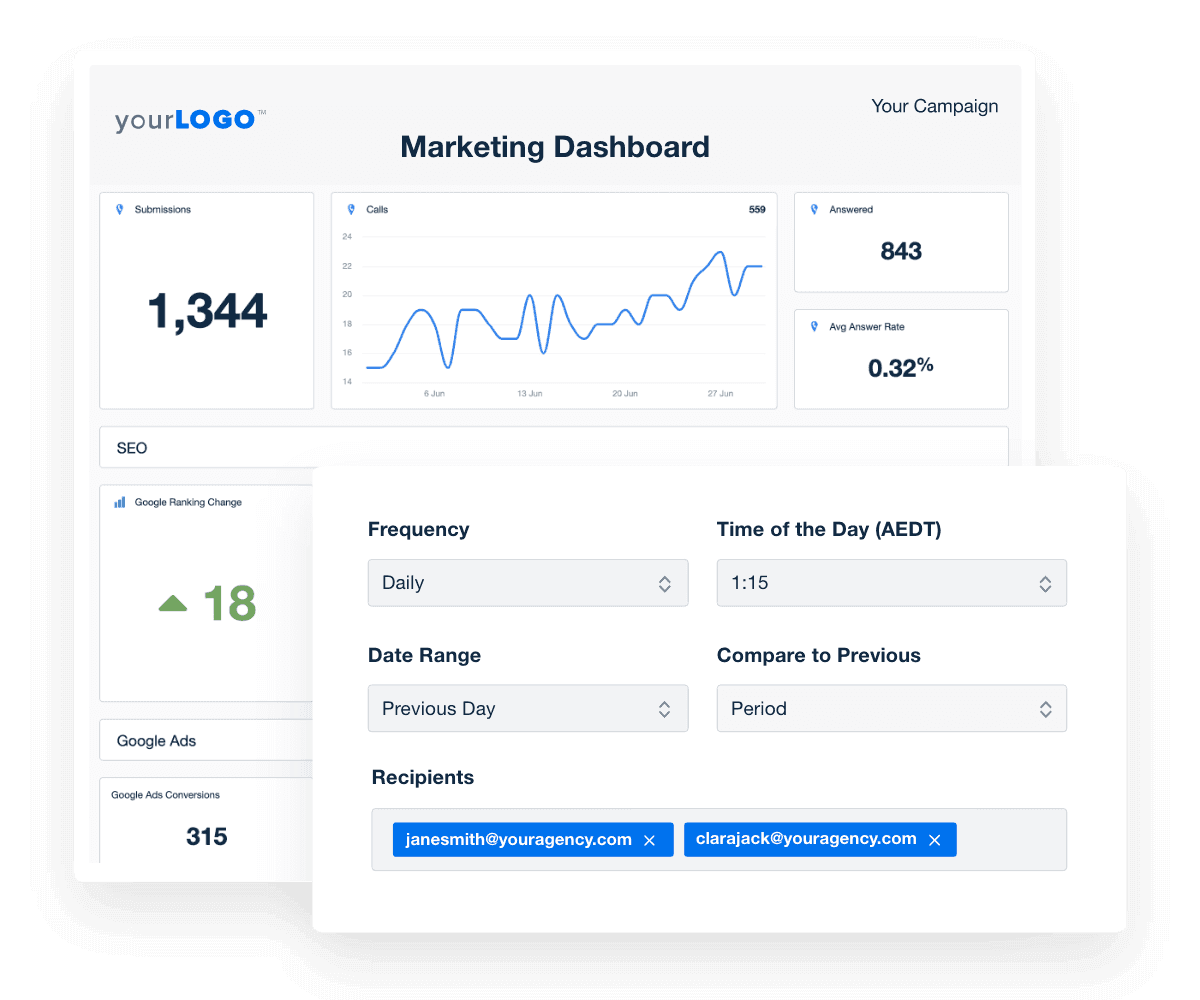
Through these reports, your agency proves it's accountability, while also becoming a trusted advisor. Client reporting is the bridge that transforms a transactional relationship into a collaborative partnership. And let's be honest, which agency wouldn't want that?
With the help of AgencyAnalytics, we present our clients with a comprehensive view of their digital marketing efforts and help them understand the bigger picture. This not only saved us time but also allowed us to build stronger relationships with our clients based on trust and transparency.
Adam Binder, Founder + CEO, Creative Click Media
So, while it might be tempting to breeze through the client reporting process, doing so would be a missed chance to deepen relationships, build trust, and position your agency as a key strategic partner.
Components of a Client Report
Navigating the various elements that make up a comprehensive client report is akin to assembling a puzzle; each piece holds distinct value, and when combined, they offer a complete picture of a campaign's performance. Let's take a closer look at these vital components.
Key Performance Indicators
When we talk about KPIs, we're talking about the yardstick by which everything else is measured. KPIs might include metrics like website traffic, lead conversion rates, revenue, or customer retention. These are the figures that often make or break a campaign and, by extension, a client relationship.
Our clients get the benefit of looking at their analytics whenever they wish, having a dashboard set up by a professional who understands the KPIs so they're not overloaded with data causing their own analysis paralysis, and giving them peace of mind to trust us as marketing experts within the industry.
Lisa Cutter, President, Vertical Insight Marketing
Think of KPIs as the navigational stars that guide a ship; they tell you if you're on course to reach your destination.
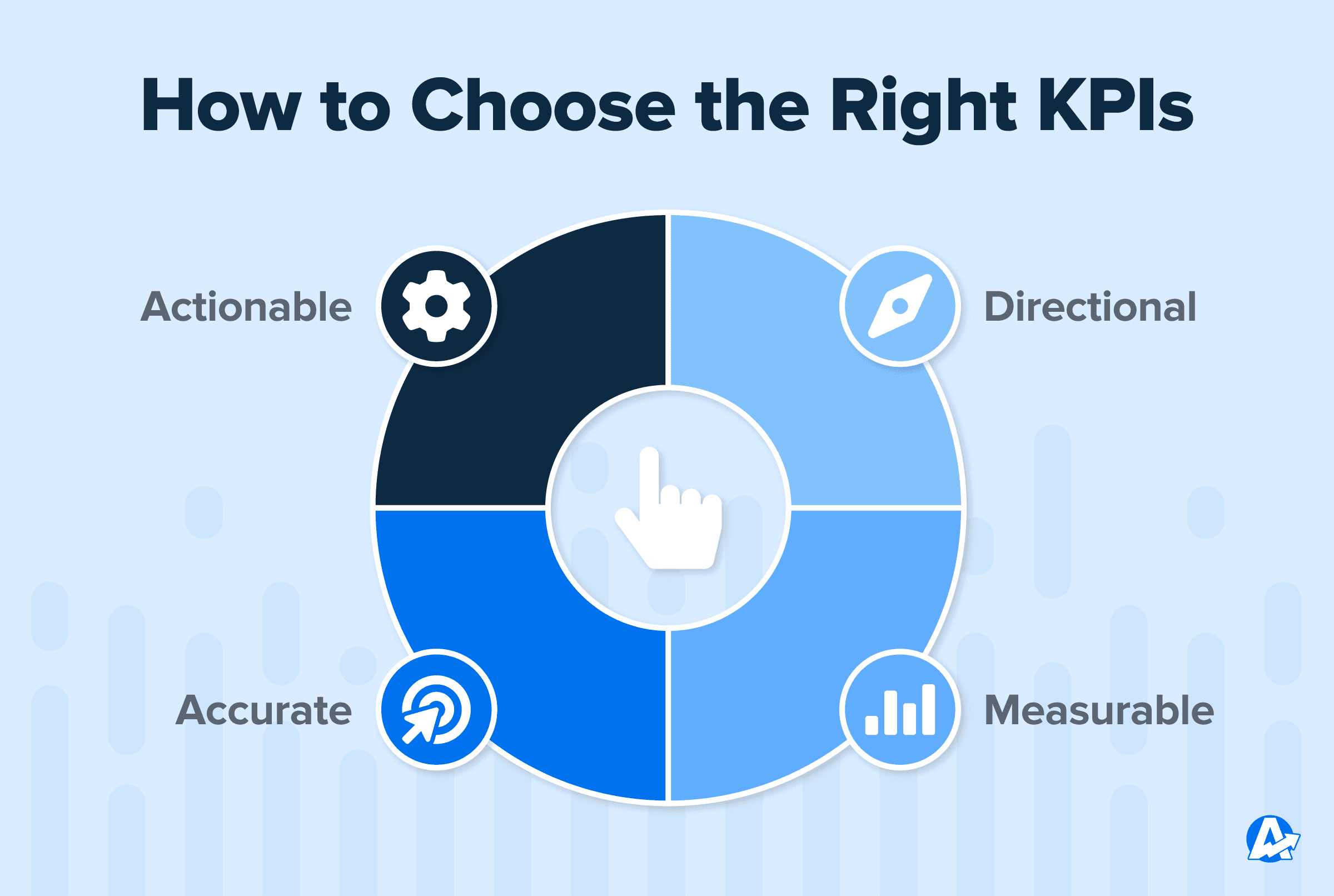
Selecting the right KPIs is similar to setting up signposts on a road trip: they need to tell you where you're headed and how close you are to your destination. But for these signposts to be useful, they need to have four key characteristics: they must be actionable, directional, accurate, and measurable.
Listen to your clients. I've seen so many clients get hazy-eyed when looking at pages and pages of data that they aren't going to use. AgencyAnalytics gives you the ability to provide exactly what they want.
Adam Palmer, President, Inertia Digital Marketing
Actionable KPIs help you make informed decisions that tangibly affect outcomes instead of simply collecting data for data's sake. Directional KPIs ensure your strategies are aligned with your clients’ business objectives, helping you focus on what truly matters.
The need for accuracy is a no-brainer; skewed data sends you off course, leading to costly missteps. Finally, if a KPI isn't measurable, it's like a signpost written in a language you can't understand—useless for guiding your journey.
These qualities ensure that the KPIs you choose serve as effective navigational tools in your marketing endeavors.
Platform Metrics
Forget about putting all your eggs in one basket. In today's marketing world, you're likely juggling multiple platforms for each client. Platform-specific metrics offer unique insights, whether it's SEO performance data, Facebook ads conversions, Instagram engagement, or PPC campaign performance.

And here's where it gets fun: Tools like AgencyAnalytics integrate these diverse metrics from 80 marketing platforms into a cohesive report in minutes instead of hours.
Other Metrics
Sure, KPIs and platform metrics are great, but what about budget pacing, customer lifetime value, or cost per acquisition? Often an overlooked data point, this kind of metric offers a fuller picture of a campaign's health. If KPIs are the destination, consider goals and budget pacing as the road signs that keep you on track.
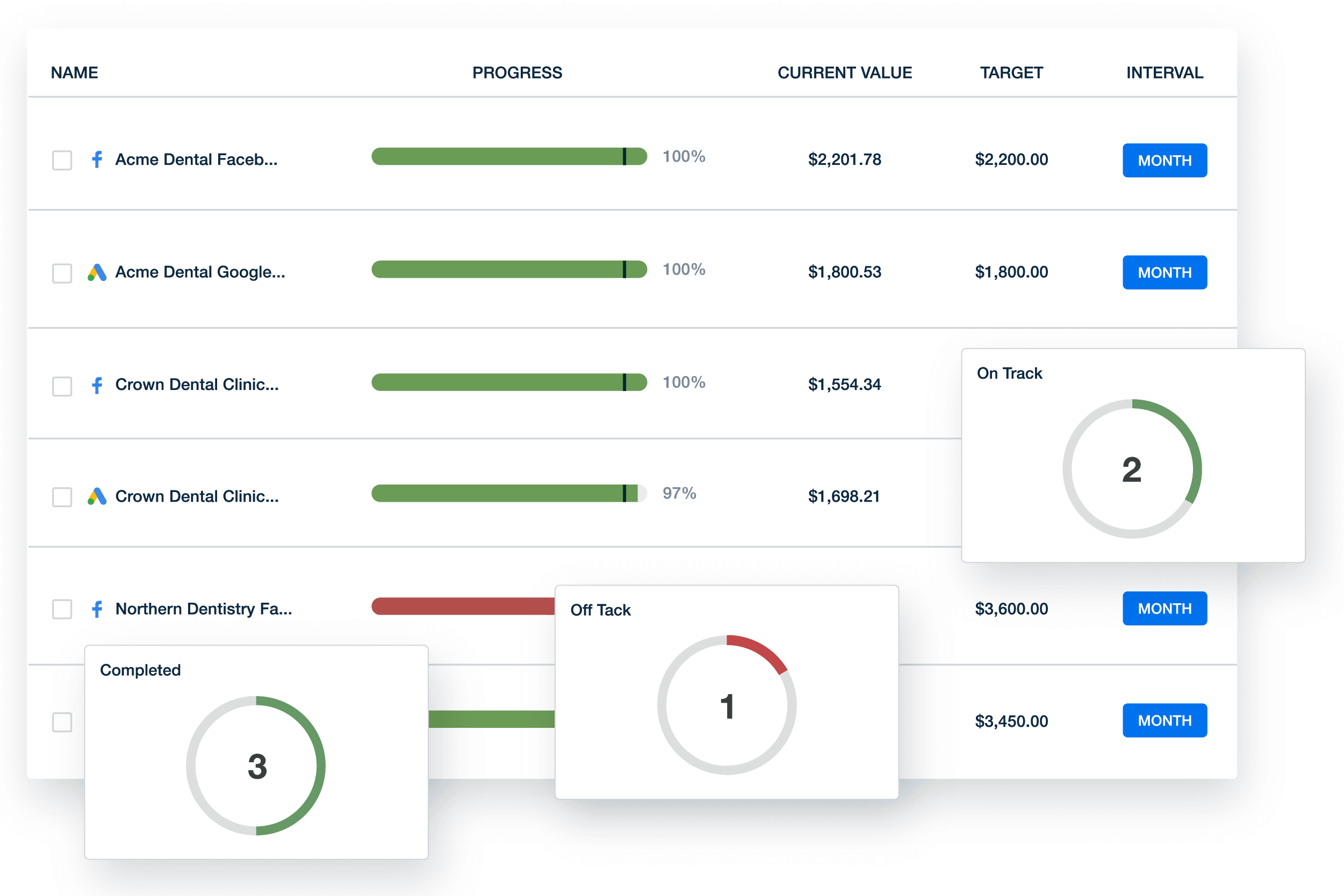
These metrics help you align your spending and strategy with targeted outcomes. For example, if your goal is to increase customer lifetime value, how are your monthly budgets reflecting this objective? Simply put, having this information in a client report clarifies whether you're merely spending money or actually investing it wisely.
More on KPIs and Metrics later in this guide!
Insights and Analysis
Data shows you what's happening; insights explain why. That's the difference between a data dump and a valuable tool for making data-driven decisions.
I always look at data and ask myself SO WHAT? If the report doesn’t answer The SO WHAT question, don’t send it.
Cheryl Ingram, Managing Director, TDMC
After all, insights make data actionable. If your client’s email click-through rates drop, data points out the trend, and insights explain why it's happening and what to do about it. This is where you pivot strategy or fine-tune tactics, providing a direct line from data to action.
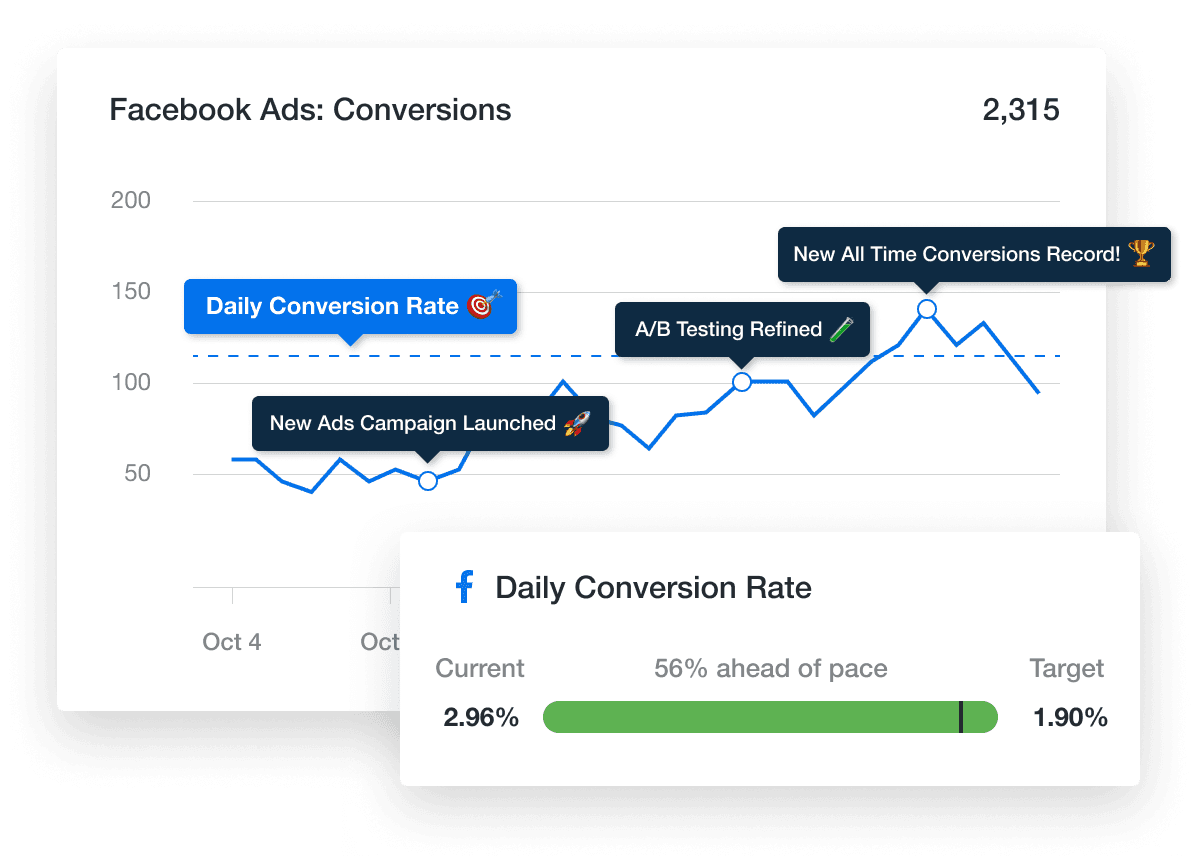
Data loses value without context. Analysis offers that context by connecting the dots between isolated metrics. It turns a heap of numbers into a coherent narrative, explaining trends and anomalies in a way clients can grasp.
It's our job to tell a simple story through reporting to our clients. The report is the client's proof that what we are doing is benefiting their business in a positive way. Using AgencyAnalytics allows us to quickly create beautiful reports that tell a story in a way our client understands.
Brian Ferritto, Partner, 42connect
Lastly, what sets a great client report apart is its ability to look forward. Forecasting is the next logical step in the process. Give clients a glimpse of what's ahead, based on what you know now, and outline plans to either seize opportunities or avert challenges.
Don't forget that an observation is not an insight. Clients don't pay for observations, they pay for someone with a deeper understanding of the data to share what the data means, why it's important, and what they should do about it.
Kerrie Luginbill, Chief Strategy Officer & Partner, OTM
A Vital Role in Client Lifecycle Management
Client reporting is the cornerstone in the relationship between an agency and its clients. This section explores the true impact of client reporting in five critical aspects of client relationships.
1. Acquisition: Reporting as a Unique Selling Point
In a crowded marketplace, every agency is looking for an edge. Quality reporting serves as a differentiator. When prospective clients see that your agency doesn't goes beyond running campaigns and also provides in-depth, actionable insights, instantly setting yourself apart.
It's a declaration that you're not just about flash but also about substance–that you'll deliver results and show your work in a clear, easy-to-understand format.
Business owners want a way to measure their progress with our services–showing them upfront that we have a professional mechanism of tracking metrics and that they can log into 24/7/365 puts their mind at ease and then they can focus on the benefits we provide their company.
William Smith, Founder, Local Search Technologies LLC
2. Expectations: Setting the Stage Through Reports
The start of a client relationship is full of promise—and peril. Setting expectations is crucial. A well-crafted initial client report lays out what the client should expect in both the short-term and long-term. By showing benchmarks, goals, and initial data points, you tell clients what you'll do for them while showing them. Plus, this helps keep the client accountable for their role in the partnership, ensuring that everyone is on the same page about responsibilities and outcomes.
3. Communication: More Than Just Monthly Touchpoints
Reporting shouldn't be the only time you communicate with clients, but it is a crucial touchpoint. These reports function as a built-in, regular check-in; a dedicated time to celebrate wins, acknowledge losses, and discuss the next steps. Think of well-written client reports as an ongoing dialogue, not a monologue you deliver from on high.
4. Trust: Transparency as a Foundation
Nothing builds trust quite like transparency, and nothing spells transparency as clearly as a well-structured client report. By transparently sharing the ups and downs, you're sending the message that you can be trusted. Clients are more likely to stick with an agency that's honest about setbacks and proactive about solutions.
We operate on trust, and transparency is required for trust. Providing a login means we have nothing to hide–because we don't! And we want to be partners with our clients and in their success.
Lorianna Sprague, Vice President of Marketing, Trusted Search Marketing
5. Retention: Proof Points That Keep Clients Coming Back
Let's face it, client retention is the lifeblood of any agency. Effective reporting plays an unsung role here. When clients see their goals met and can trace a line from your actions to those outcomes, they're likely to stay. Reports that continually deliver insights and show value retain clients while turning them into advocates.
In part one of our 2023 Marketing Agency Benchmarks Report, we revealed that 95% of marketing agencies heralded communication, transparency, working relationships, and campaign performance as the top factors influencing client retention–all covered by solid client reporting.

Client reporting is the framework that supports and enriches every client interaction. From setting your agency apart in the acquisition phase to fortifying long-term relationships, a well-considered report is like the Swiss Army knife in your client management toolkit—versatile, indispensable, and surprisingly powerful.
Client reporting is the backbone of our relationship with clients. Informative reporting builds trust with clients, and AgencyAnalytics has led us to high client retention rates because of the effectiveness of online reporting.
Brad Fogel, CEO, Operation Technology
Scheduled vs. Ad-Hoc Reporting
Both scheduled and ad-hoc reporting have a place in an agency's client reporting strategy, but knowing when to use each can be the difference between a good relationship and a great one.
The Pros and Cons of Scheduled Reports
Reports arriving in the client’s inbox like clockwork make tracking long-term trends and setting benchmarks easy. Clients appreciate the predictability, and agencies benefit from the disciplined routine of gathering and presenting the client’s data.
According to the final instalment in our 2023 Marketing Agency Benchmarks report, 58% of agencies surveyed create reports on a monthly basis.
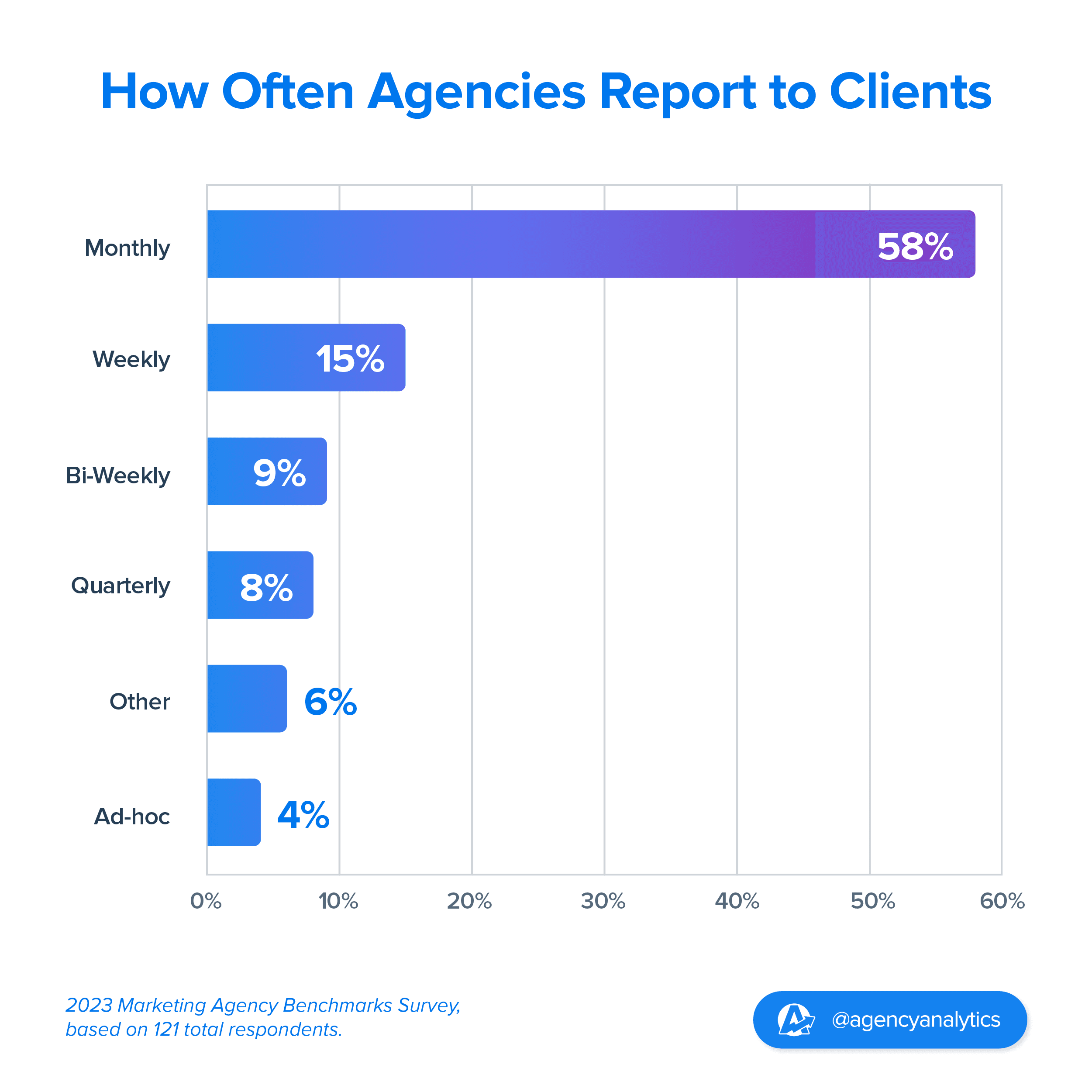
Sending monthly reports not only helps provide clients with an overview of what was achieved and the progress made within a month but also gives campaigns time to set up and normalize.
Ariene Dionela, Digital Media Account Director, Connections Marketing
However, monthly reports have their limitations. For one, they might not be responsive enough to capture sudden changes or address urgent issues. Plus, their regularity sometimes creates a sense of complacency, where the routine becomes so automated that the valuable dialogue between agency and client might diminish.
Ad-Hoc Reporting
Ad-hoc reports are the special forces of the reporting world—called into action for specific missions. They’re invaluable for urgent needs or sudden shifts in strategy. If a campaign goes viral or there's a crisis that needs immediate data analysis, ad-hoc reports are your go-to.
Yet, ad-hoc reports can also be resource-intensive and disrupt the regular workflow. They often require quick turnarounds and divert attention from other ongoing projects. If they become too frequent, they might even induce a sort of report fatigue, where the constant stream of data becomes overwhelming for the client.
Striking the Right Mix
Finding the right blend of scheduled and ad-hoc reporting is like getting the seasoning just right in a recipe—too much of one, and you risk overwhelming the dish. Scheduled reports provide the base, offering a consistent framework for decision-making. Ad-hoc reports add the spice, giving timely insights for immediate actions.
A balanced strategy might involve sticking primarily to scheduled monthly reports but having a clear protocol for when and how to deploy ad-hoc reports. Setting expectations with clients about the circumstances that warrant each type of report is also crucial, ensuring you maintain the valuable dialogue that well-crafted reporting encourages.

How Squeeze Marketing Used Client Reporting as a Unique Differentiator
Founded in 2015 and based in South Carolina, Squeeze Marketing is a full-service digital and print marketing agency with three partners boasting diverse skills. Unlike many agencies focusing on impressions and clicks, client revenue is their number one key performance indicator.
Problem: Reporting Challenges
Squeeze Marketing originally set out to simplify complex digital marketing services like SEO and social media advertising for small businesses. However, they faced a bottleneck: how to effectively demonstrate their value to clients.
Their search for the perfect client reporting tool became a cumbersome journey, leading them through a maze of software that either slowed them down or produced less-than-stellar visuals.
Solution: Overhauling The Client Reporting Process
After trying out 29 different tracking code integrations, they discovered AgencyAnalytics, which offers modular options, a plethora of integrations, and visually engaging reports. With this, the reporting process became a well-oiled machine. Team members individually input their analyses, resulting in a streamlined, unified PDF report that neatly bundles all their services.
Outcome: Client Relationships and Agency Growth
The revamped reporting process paid off, becoming a cornerstone of their client retention and upsell strategies. Their comprehensive, easy-to-understand monthly reports effectively communicated their value, convincing clients that their investments were worth it. The transparent approach has made Squeeze Marketing’s strategy a resounding success, fortifying client relationships and the agency's growth trajectory.
Lessons: Takeaways for Other Agencies
Squeeze Marketing's journey illustrates that client reporting isn’t a mundane task but a golden opportunity to build transparent, enduring relationships with clients. Choosing a client reporting tool that fits your agency's needs will streamline the process and free up time to focus on strategy.
Most importantly, a well-executed reporting strategy acts as a powerful lever for client retention and upselling. If you’re looking for a significant impact, it might be hiding in your reporting process.
You wouldn’t think the little things make that big of an impact, but AgencyAnalytics has fundamentally changed our internal process for the better.


Client Reporting Best Practices
Great reports keep your clients informed and your agency-client relationships healthy. When done properly, they are strategic tools that direct the course of your client's business. For many clients, these reports are the most tangible evidence they have of your value as a service provider.
When executed effectively, custom reports offer marketing managers a crystal-clear view of their client's accounts, displaying key performance indicators that are actionable, directional, accurate, and measurable. These four traits are essential because they empower decision-making, align strategies with business objectives, ensure data integrity, and allow for tangible tracking of goals. When your report ticks these boxes, it elevates itself from being 'another document' to a vital resource for strategic planning.
Maintain Reporting Consistency
First off, let's talk about consistency. Regular client reports have to be, well, regular. And not just regular; they have to contain relevant data presented in a similar fashion each time. This means standardizing metrics, data sources, and even the format of the report itself.
For instance, if you’ve decided that the executive summary comes first and the monthly summary last, stick with it. Consistency lends credibility to your marketing efforts and makes it easier for clients to follow along.
Ensure Accurate Data to Foster Trust
Nothing derails an agency-client relationship faster than a data error. Accurate data goes beyond making numbers look good—you want numbers that tell the truth. Ensuring your data is accurate will help your clients understand that you’re a reliable partner who knows what they’re doing.
Accuracy establishes and nurtures trust, and trust is the most vital ingredient in a good client relationship and in client retention.
Lorianna Sprague, Vice President of Marketing, Trusted Search Marketing
Tell the Success Story Using Data Visualizations
A picture paints a thousand words; the same goes for data visualization in a well-written client report. Use graphs, pie charts, or whatever it takes to make your key metrics easily digestible. Remember, not everyone is a data whiz. A colorful graph or an easy-to-read table will make your marketing efforts far more palpable to the layperson.

Tailor Reports to Individual Client Needs
Customization is key. If a new client is more interested in one set of metrics over another, adapt the client report templates to suit their unique needs. After all, no two marketing channels are alike, so why should your reports be?
Prioritize clarity and relevance. Ensure every piece of data and insight directly ties back to the client's goals and objectives, presented in a straightforward and easily digestible manner. When a report speaks directly to a client's needs and is free from extraneous information, it not only becomes engaging but also drives meaningful action and builds trust with you and your clients.
Ruben Roel, President, Investigator Marketing
Creating a unique client report template for each client type streamlines onboarding and lets you create a unique experience for different periodic reports based on the depth of the marketing campaigns offered.

Tap Into Automated Reporting Tools
Manual reporting is so last decade. Automated reporting tools help you pull data from various sources to create reports that are both comprehensive and time-efficient. They also free up your creative juices for tasks that require a human touch, like writing killer ad copy.

Check the Report Before Sending it to Clients
Before that report flies into cyberspace, ensure it undergoes a rigorous internal review. In this report approval stage, you catch any errors or inconsistencies and ensure everything in the report aligns with your client’s objectives and expectations. It's like spellcheck, but for your agency's reputation.
Whether you’re a reporting newbie or a seasoned vet, there’s always room to up your game. So go ahead, and create reports that not only inform but also impress. After all, a report isn't just a sheet of paper, it's your brand's voice in numerical form.
AgencyAnalytics has been a game-changer for our agency. We wholeheartedly recommend AgencyAnalytics to marketing agencies looking to streamline reporting, make data-driven decisions, and deliver exceptional client service.


Elevate Your Reporting, Strengthen Your Client Bonds
Well-written client reports should always add value, translate important metrics into actionable steps, and turn the spotlight onto the effectiveness of your agency-client relationship.
By adopting just a few best practices, you streamline the whole process, generating reports that go beyond pie charts and percentages. Automated reports let you pull from multiple data sources in just a few clicks, enabling you to visualize data in ways that resonate with your client.
And it's not just about the data—it's about aligning the data with the client's business goals, and even exceeding the client's expectations through keen insights and analysis.
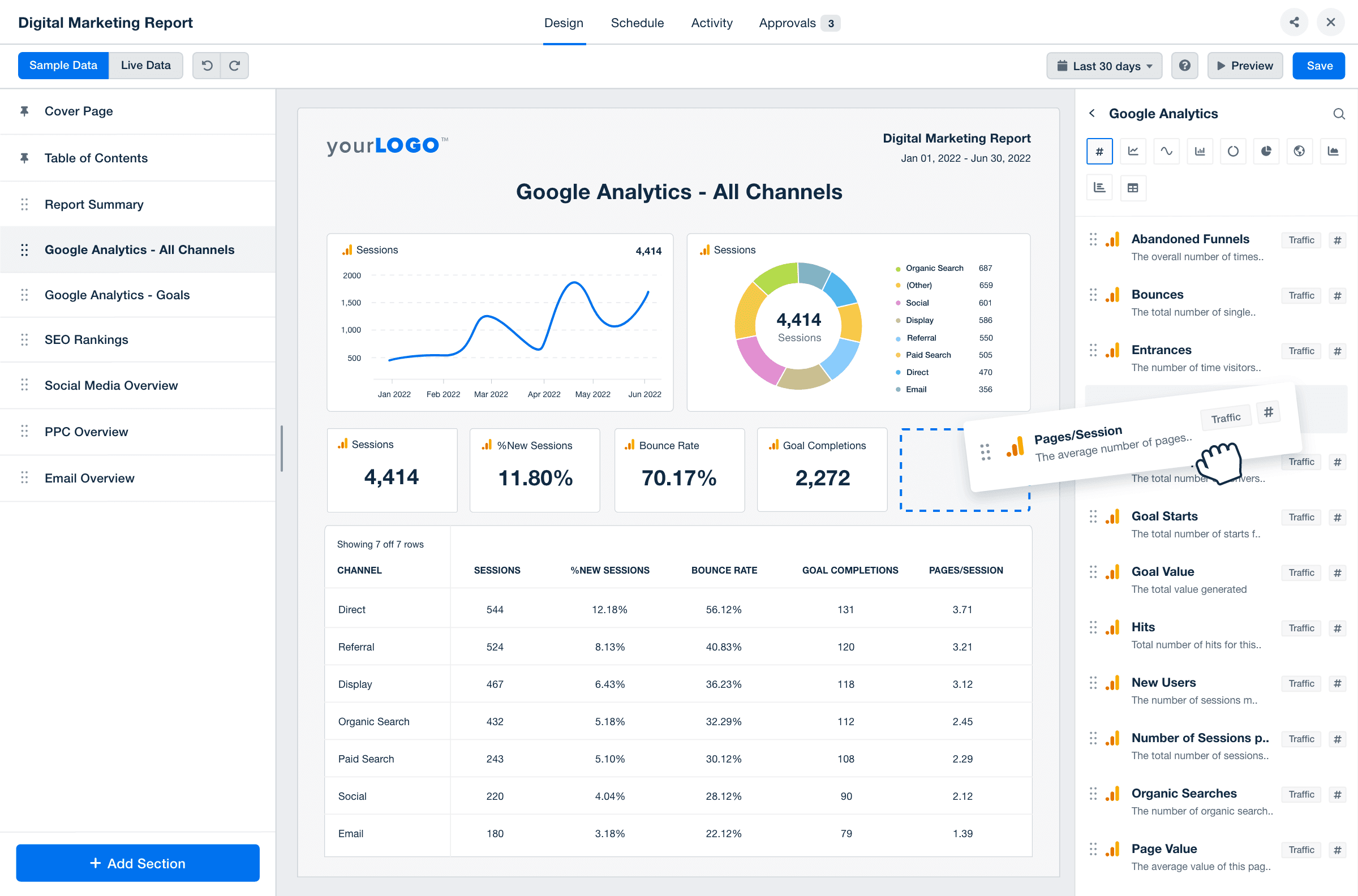
From the first report you send to periodic reporting, the emphasis should be on fostering client engagement by producing an effective client report that doesn't just tick boxes but paints a fuller picture of the client's business landscape. And if the prospect of doing all that manual work has you dreading regular reports, tools like AgencyAnalytics have your back.
It’s time to stop viewing reporting as the grounds at the bottom of your cup and start seeing it as the fresh coffee that perks up your client relationship. If you're keen on brewing something strong and effective in marketing reports, why not try AgencyAnalytics free for 14 days? It just might be the kick your reporting needs to become an integral part of your client engagement strategy.
Get Started for Free
